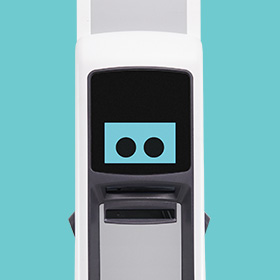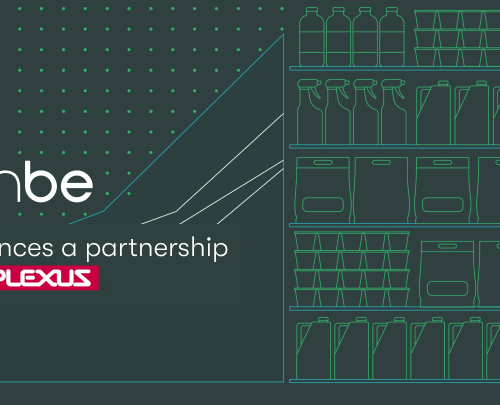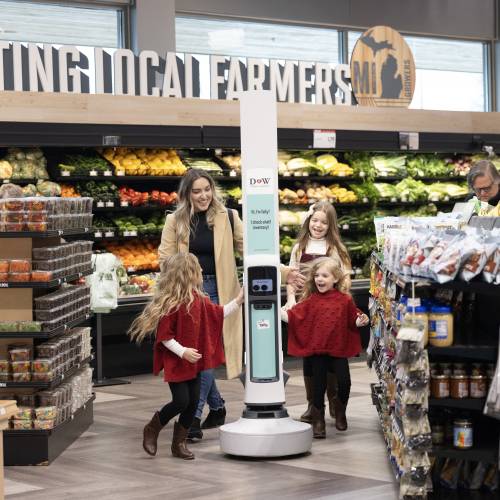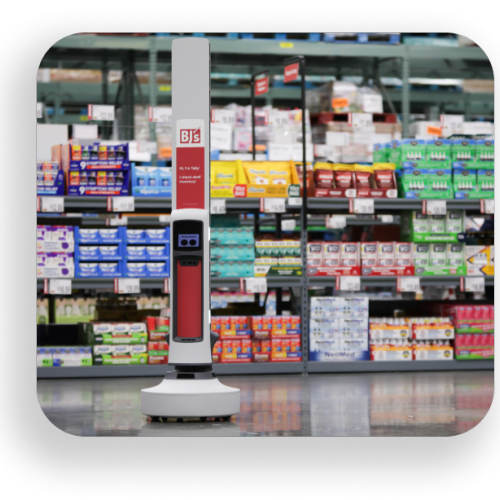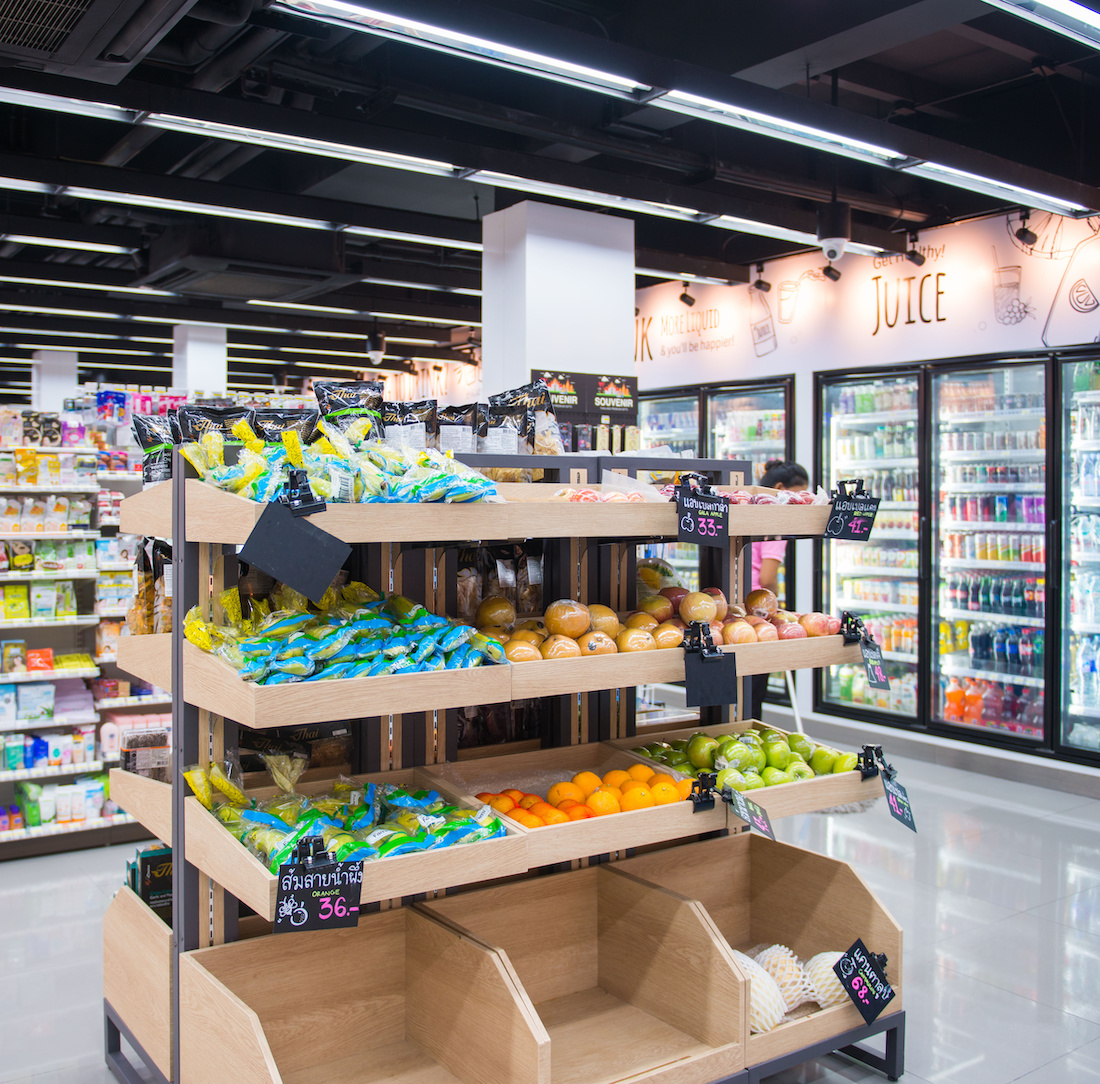
A stolen pallet of goods, an employee pocketing a backroom item, a distracted shopper forgetting to scan a product in the bottom of their cart: any of these scenarios contribute to retail shrink. As companies face tight margins due to economic conditions like inflation, many major retailers like Home Depot, Walgreens, and Macy’s have recently pointed to shrink as a key factor in their overall revenue mix.
What is retail shrink?
Retail shrink is a broad term used to cover a range of inventory losses, whether by internal or external theft, administrative or operational errors, or spoilage and throwaways. Understanding shrink to simply mean theft or violent robbery overlooks other key challenges, especially for grocers and wholesalers, whose products often have a limited shelf life. Retail industry leaders need more specific inventory location and count information to clarify when, where, and why products are leaving shelves – as well as if it’s really happening at all.
Retail industry leaders need more specific inventory location and count information to clarify when, where, and why products are leaving shelves – as well as if it’s really happening at all.
Because there’s no single cause of retail shrink, there’s no cure-all solution. But different store technologies can provide the crucial shrink analysis in retail needed to course correct and help individual decision-makers understand when their products are misplaced, damaged, or actually stolen—and the consequences.
The difficulty of pinpointing the root causes of shrink in the retail industry
The National Retail Federation (NRF) registered a small rise in shrink from 2021 to 2022 (to 1.6% of sales, up from 1.4%, for a total of over $112 billion), although rates have been relatively stable since 2015. Food retailers in particular are feeling the effects of shrink, accounting for up to 3% of sales annually lost.
It’s difficult to get an accurate picture of exactly how widespread shrink is in the food retail industry – and to identify which situations are the biggest drivers of loss. Even the best existing data is often gathered using small survey response numbers that are then extrapolated across industries, using figures from the previous year, which may not match current trends. Plus, reports tend to focus on external theft—organized retail crime or smash-and-grab robberies—as the main culprit of retail shrink, even though NRF data shows that in 2022, outside theft accounted for only 36% of loss, while internal operations errors accounted for the majority of retail shrink losses at 63%.
While theft is certainly a contributing factor, especially with the popularity of self-checkout registers at grocery stores, most retail shrink is attributable to internal errors like misplaced products on shelves. For example, an average of 60% of items believed to be out-of-stock are actually somewhere else in the store or back room, according to data aggregated across Simbe’s dozens of customers.
For retailers to understand their losses, they need to know why products are missing in the first place, which starts with getting precise location data for products and accurately measuring what’s on store shelves
Common shrink prevention tactics like installing security cameras, investing in anti-theft training for employees, and even implementing accountability measures to deter employee theft, only solve a small part of the shrink problem. For retailers to understand their losses, they need to know why products are missing in the first place, which starts with getting precise location data for products and accurately measuring what’s on store shelves. Without such shelf analytics and store intelligence, retailers don’t have accurate data for retail shrink analysis, and some stores may even be investing in the wrong corrective tactics and technologies to reduce losses.
How to prevent shrink in retail: Staying ahead by knowing what’s in stores
Having up-to-the-moment retail insight into where products are located, what products should be in a store—and how many of those actually are—is essential to prevent retail shrink. Retailers still reliant on manual or third-party inventory audits to account for inventory losses put companies at a disadvantage. Conducted by teams of 20 to 30 individuals tasked with completing a large-scale audit, human error still occurs. Similarly, the results of third-party audits aren’t dissimilar to routine in-store associate-led inventory checks: massive discrepancies and gaps in data exist. And all these inventory data discrepancies can cost retailers up to $2T a year in overstocking, or out-of-stock products.
Many retailers still lack a true line of sight into their products’ journey from arriving at a store to being scanned (or not) at checkout. If an item didn’t make it onto a shelf, did it actually arrive from the supplier? If an item marked off-shelf never went through a cash register, where did it go missing? Knowing the answers to these questions can help stores identify patterns, detect vulnerabilities, and optimize their response tactics—as well as detect other common non-theft scenarios that can lead to costly inventory distortion.
For example, say a grocery store customer buys six bell peppers—two yellow and four red. The cashier (or self-checkout system) scans only one item, marking a quantity of six, despite the peppers having different SKUs. This oversight causes a discrepancy in the amount of red peppers on the shelf and those scanned at checkout. With proper store intelligence, staff can promptly investigate and correct the error.
Using technology to close retail shrink information gaps
Many proven solutions exist to help food retailers accurately close data gaps and drive accountability for what’s on the store shelf, boosting security and resolving labor challenges in the process:
- More retailers are adopting (or readopting) RFID technology for accurate inventory tracking, and IHL research shows they enjoyed 57% more profit than their peers in 2023. Tally, Simbe’s autonomous robot, uses RFID technology and computer vision to provide a real-time assessment of the entire store. This store intelligence is integrated with perpetual inventory and POS systems to give retailers an accurate assessment of where they need to take action to resolve common issues like wrong-placed products, out of stocks, or price and promotion errors.
- Self-checkout poses significant inventory loss risks. Our customer and industry innovator Schnuck Markets is combining computer vision with AI-powered cameras above self-checkout stations to ensure proper item scanning and accountability.
- While 15% of customers admit to having intentionally stolen groceries via self-checkout, bottom basket detection cameras address both intentional and accidental losses (such as forgetting to scan an item left in the cart) during self-checkout, mitigating unintentional loss risks. Various Simbe partners are also seeing success from this use case.
- Simbe's automatic discrepancy notifications alert store teams instantly to inventory gaps, prompting restocking actions and flagging potential shrink not reflected in inventory records. Such alerts allow teams to focus on triaging issues rather than finding them.
- Data analytics pinpointing sudden large inventory movements can aid in identifying real instances of organized retail crime, particularly when integrated with security systems. For example, a California retailer used Simbe-provided inventory count information after major looting incidents to quickly assess what apparel items remained in store for police, insurance, and accounting purposes.
No matter the underlying cause of retail loss, having accurate, real-time insights about in-store product location and availability can help retailers identify the root causes of their inventory losses. Store intelligence, and the technology supplying this data, offer an underlying foundation of information that top retailers can use to combat theft or other types of loss and ultimately gain control of inventory.
